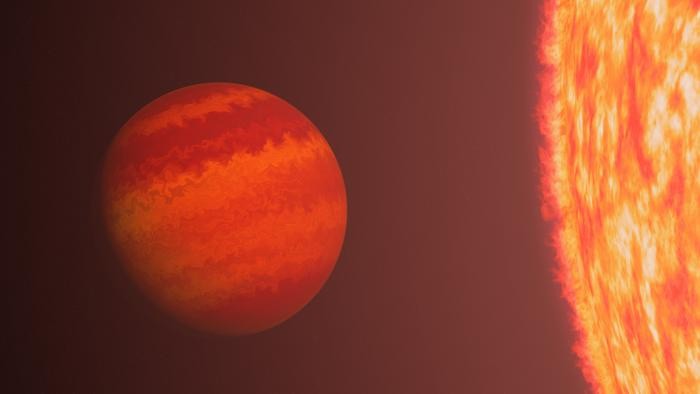A peculiar planet unraveled by NASA's Transiting Exoplanet Survey Satellite (TESS) has left astronomers scratching their heads. Despite being bombarded with intense radiation from its red giant parent star, this exoplanet named Phoenix, has managed to retain its atmosphere.
Rare Exoplanet Survives Bombardment From Red Giant Star
Researchers from John Hopkins University explained that this rare exoplanet should have been stripped down to bare rock by the intense radiation from its nearby host star.
Instead, it has developed a puffy atmosphere, forcing scientists to reconsider how planets age and survive under harsh conditions. They named the exoplanet Phoenix for its resilience.
The findings revealed that Phoenix has a much larger and less dense atmosphere than expected. Sam Grunblatt, a Johns Hopkins University astrophysicist leading the research, noted the surprising nature of Phoenix's atmospheric retention despite its proximity to a large host star. The central question is how this atmosphere has persisted under such conditions.
Phoenix belongs to a rare category of planets known as "hot Neptunes." These planets share similarities with the solar system's outermost frozen giant, Neptune, despite being much closer to their host stars and significantly hotter.
Named TIC365102760 b, the planet Phoenix has defied expectations by being smaller, older, and hotter than scientists had predicted. This exoplanet, which is 6.2 times larger than Earth, orbits its parent star every 4.2 days and is about six times nearer to its star than Mercury is to the Sun.
Phoenix's age, extreme temperatures, and low density suggest that the process of atmospheric stripping occurred more slowly than previously believed.
Read Also : NASA TESS Detects a New 'Warm Jupiter' Exoplanet

Smallest and Least Massive Planet Orbiting a Red Giant Star
Researchers estimate that Phoenix is 60 times less dense than the densest "hot Neptune" known and predict that it will survive for no more than 100 million years before it falls into its giant star.
This discovery marks Phoenix as the smallest and potentially the least massive planet found orbiting a red giant star. Its ability to retain an atmosphere, unlike other hot Neptunes that are smaller and denser, is particularly puzzling.
Sam Grunblatt and his team devised a new approach to analyze data from NASA's TESS to achieve these insights. The satellite's telescope identifies low-density planets by detecting the dimming of their host stars during planetary transits.
Grunblatt's team refined these observations by eliminating unnecessary light and incorporating additional data from the W.M. Keck Observatory on Hawaii's Maunakea volcano.
The team expects that these discoveries could provide important information about the evolution of atmospheres similar to Earth's. Predictions indicate that in a few billion years, the Sun will expand into a red giant star, potentially consuming Earth and the other inner planets.
Grunblatt highlighted the importance of understanding the late-stage evolution of planetary systems, suggesting that Phoenix's properties imply Earth's atmospheric development might proceed differently than previously thought.
Planets resembling Phoenix, characterized by their gaseous, icy, or lightweight compositions, are generally less dense than any in our solar system. They're rare, with only about 1% of stars believed to host them. This rarity has driven Grunblatt's team to keep searching for these hard-to-find worlds.
"We still have a long way to go in understanding how planetary atmospheres evolve over time," Grunblatt said in a press release.
The findings of the team were published in The Astrophysical Journal.
Related Article : NASA Discovers 6 Planets Dancing in a Rare Rhythmic Beat

ⓒ 2025 TECHTIMES.com All rights reserved. Do not reproduce without permission.




